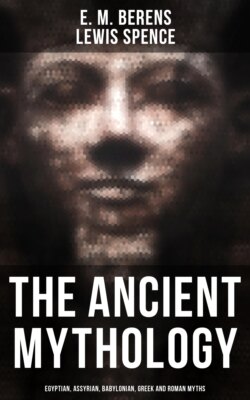Читать книгу The Ancient Mythology: Egyptian, Assyrian, Babylonian, Greek and Roman Myths - Lewis Spence - Страница 64
На сайте Литреса книга снята с продажи.
Lamentations for Tammuz
ОглавлениеCharacteristic of the Tammuz ritual are the lamentations, of which several series are still extant. In later times it appears that a different cause was assigned for the weeping of the "wailing men and wailing women." They no longer mourned the death of Tammuz, but the departure of Ishtar into the netherworld, and so the legend of her journey to Aralu came to be recited in the temples. Sir James Frazer suggests that the ritualistic counterpart of the Tammuz-Ishtar myth may have included the pouring of water over an effigy of the god, the practice corresponding to the pouring of the water of life over him in order to bring him back to life. If this indeed formed a part of the Tammuz ritual we may take it that it was intended as a rain-charm.
Likewise the Adonia festival of the Greeks symbolized the death and resurrection of Adonis. This feast occupied two days; on the first day, images of Adonis and Aphrodite were made and laid each on a silver couch; on the second day, these images were cast by the women into the sea, together with 'Adonis gardens,' as they were called—pots filled with earth in which cut flowers were stuck. It is believed that this rite was meant to signify the revival of vegetation under the influence of rain. The persons engaged in it indulged in such lamentations as were uttered by the worshippers of Tammuz in Babylonia, tore their hair, and beat their breasts. The festival of Adonis fell in the summer-time at Alexandria and Athens, in the spring at Byblus, while in Phœnicia it occurred in the season when the river Nahr Ibrahim (formerly called Adonis) bore down from the mountains of Lebanon the red earth in which the devout saw the blood of the slain Adonis. Golden boxes of myrrh were employed at the Adonia festival, incense was burned, and pigs were sacrificed. Pigs were sacrificed also to Osiris, whose cult, as has been shown, had much in common with that of Tammuz and Adonis. The Egyptian god was cast by his enemies into the waters of the Nile; and it may be that this myth too had a ritualistic counterpart, designed as a charm to produce rain.
It has been indicated already that the elucidations of the myth of Ishtar's journey to Aralu are many and divergent. The variants above enumerated serve each to cast light on the other, and from a comparison of these we may succeed in arriving at a satisfactory conclusion. To begin with, however, it must be remembered that when the cult of any deity has reached a fairly advanced stage it is impossible to assign to him any one department of nature, to say that he is a sun-god, a rain-god, a corn-god, for he may possess the attributes of all of these. In giving any god a departmental designation we are striving to express his primitive or predominant characteristics merely.
The Mother-goddess Ishtar.
